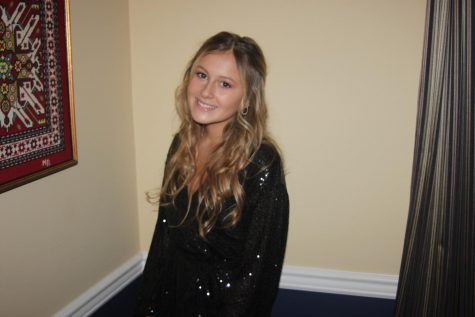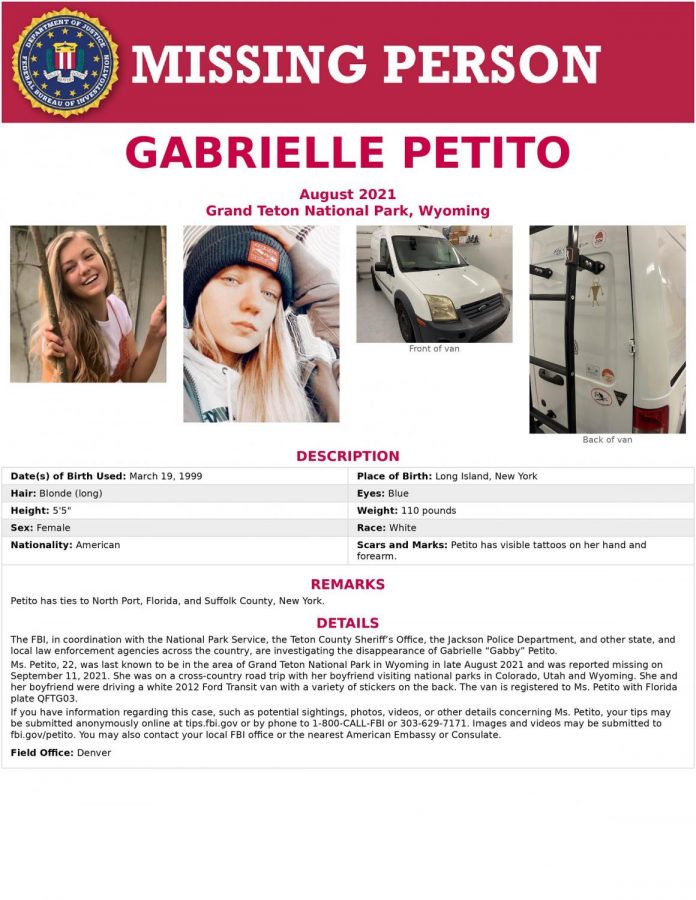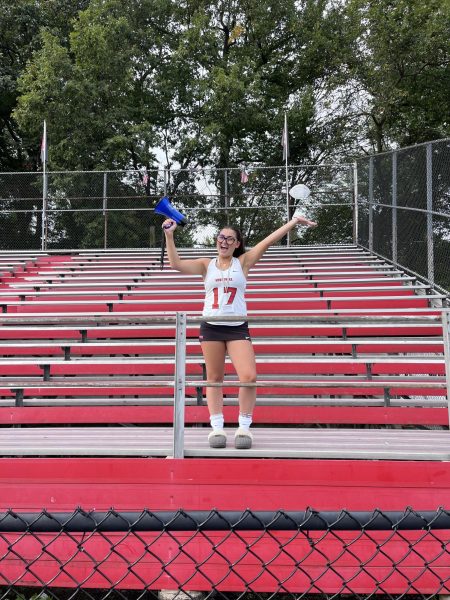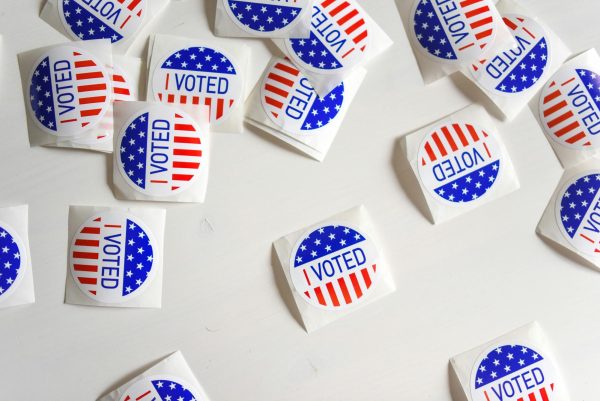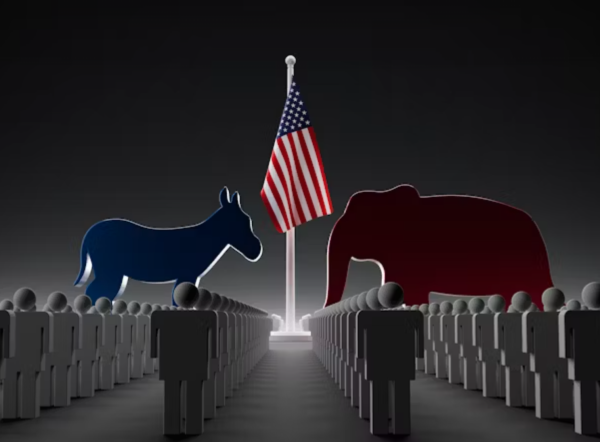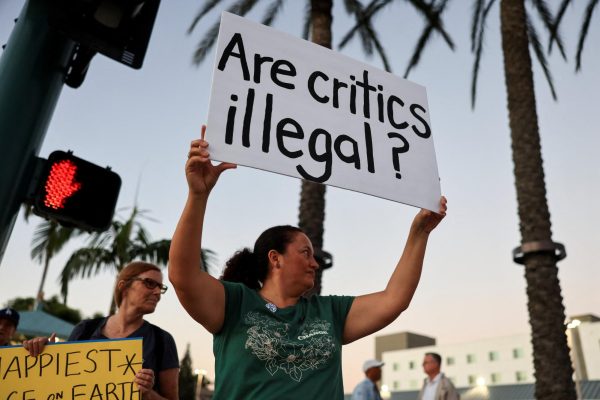OPINION: How to solve disproportionate media coverage? The answer is unclear
Working in news is largely about competition and engagement and the stories being told or thrown out are meticulously picked. As a fast-paced occupation, being a journalist is about covering not only what we think people should know, but what will grab the most attention. Finding points of empathy in a story can be extremely important when covering certain topics, but does the race and gender of the victims change the worthiness of the story?
In a booming world of technological communication, finding people with information on criminal cases has become easily accessible. After grabbing the attention of the nation, Gabrielle Petito, a 22-year-old woman who disappeared after traveling the country with her fiance, was found dead in Wyoming.
On Sept. 1, Petito’s fiance Brian Laundrie suddenly returned to their home in Florida alone, giving no answer to where Petito was. After her family filed a missing persons report and Laundrie refused to talk to authorities, the police and FBI had barely any leads. It was thought at the time that she could be anywhere between Wyoming, the last known place she was seen, and Florida. But when news about the case quickly became widespread on social media and news websites, answers came faster than what might have been possible.
On Sept. 17, @mirandabaker_ released on her TikTok account that she and her boyfriend had picked up Laundrie hitchhiking on Aug. 29. Miranda described in detail their route with Laundrie, and that she had been working with the police.
Along with Miranda, Kyle and Jenn Bethune may be key witnesses in her disappearance. The couple was, much like Laundrie and Petito, living on the road and filming about their trip on social media. According to their Youtube ‘Red White & Bethune’, the couple had found footage of Petito’s van in late august.
“I opened Facebook and saw that @fettisonthemove had tagged me in a story asking me to check all my videos from the 25th-27th of August,” the description of their video stated. “I INSTANTLY got a bone chilling feeling. I leapt up and ran to my laptop. I watched the rest of my footage and sure enough, her van was in the video.”
After what seemed to be a cold case, Petito’s body was found in Grand Teton National Park, right around the area that Baker and Bethune had discussed in their videos. Her remains were found on Sept. 21, just 10 days after being reported missing. Public attention and FBI involvement for Petito may have had a large impact on the findings and the timeline of the case. The TikTok hashtag, #gabbypetito, has over a billion views alone. As questions on the effects arose, so did criticism.
While still agreeing with the fact that Petito deserved justice, people have begun to wonder why others have not.
According to the BBC, over 700 Native Americans were reported missing in the last 10 years. A lack of media attention has made it more difficult for these cases to be solved.
For all families and friends of missing people, public attention and FBI involvement like Petito received is a dream. Jalani Day and Daniel Robinson, two black men who have been missing in the last few months have been also used as examples. The families have urged that they receive as much coverage and urgency from authorities. And for Jalani Day’s family, their anger may have helped. Day’s body was found and identified in late September after receiving traction from those criticizing the lack of coverage for people of color.
It’s unrealistic to expect every single missing person’s case to get just as much coverage. But there’s a difference between condemning attention towards someone and arguing that there’s a statistical trend on the type of people that receive that attention. The term ‘Missing White Woman Syndrome’, coined by journalist Gwen Ifill over a decade ago, has gotten more attention recently. The term refers to journalism’s focus on missing white women in comparison to others.
So, do gender and race play a factor in deciding what stories to write? Historically white females in advertisements and entertainment have been displayed as caring and innocent. Iconic ‘white women screaming’ scenes have been used to add action and fear to movies and shows. A media researcher Danielle Slakoff, according to the New York Times, has said that she has found through statistics that missing white women and girls receive more coverage.
It’s simple to pinpoint this issue to what seems to be the problem, press. The people writing the stories and the chief editors who gave them the a-ok. But the question isn’t that easy in retrospect. Newspapers are constantly tracking what stories are hit and miss and form their future headlines and front pages around public engagement. So if news sources are focusing on stories that statistically do better, can you blame them or all of society?
Another argument is that newspapers and sites have a responsibility to the people. Authorities focus on high-profile cases and a lot of that has to do with its media coverage. These decisions not only shape the views of the public but can change the course of events in unimaginable ways.
So although news sources aren’t the root of the issue they are something that can be controlled. How do you tell the public to move away from a subconscious decision on what to interact with on a daily basis? We can hope that moving towards a more progressive society will help change the public point of view but that doesn’t become a solution.
The only realistic correction to this is to create a step in press production. Before choosing what stories to write there needs to be a sort of statistical analysis to look at their ratio of coverage and add that into the decision-making process. But this isn’t very easy. We can’t expect huge newspapers like The Washington Post and The New York Times to not write about high-profile cases like Petito’s.
What seemed to be a non-disputable argument on what needed to be done about inequality in media coverage isn’t as simple as it may seem. Not unlike the other racial issues in the United States, the solution is complicated and may not be controllable. In a society where racism is engraved generationally, laws and rulings can’t always fix the issue.
News is a business and it can’t be expected that they risk their success due to how history and stereotypes have impacted our society. But if no steps are taken to change the issue with press coverage, then the cycle may never end. It could become a small step in the transition of our society away from the ideas that have led to this trend.
Photo Credit: “The search for Gabrielle Petito continues” by C. Schneider is licensed under (CC BY-SA 2.0).
